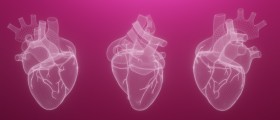
Definition
Muscle atrophy is a condition in which the muscles start to lose their body of matter. There are many various problems that could lead to muscle atrophy, such as being bedridden for a prolonged period of time and being chronically malnourished. Also, various medical conditions can lead to the muscles losing their mass, such as being burnt, suffering from certain respiratory and heart problems, various types of cancers, as well as AIDS. Once the muscles start to lose their mass eventually they become debilitated and unable to perform. Even in the cases of relatively mild atrophy, the movement and strength are going to be limited to some extent. In addition, there are two types of muscle atrophy that are prevalent the most, including being bed ridden and neurogenic atrophy. When it comes to the type of atrophy in which the muscles are simply not used enough there are many instances in which these adverse effects can be turned around. If individuals are not active enough, many muscles will start to lose their matter, but if recognized as a problem in a timely manner, an increased amount of physical exercise can build up the muscles and stop the atrophy. Many people who find themselves in such a situation are chronic patients who are bedridden. On the other hand, neurogenic kind of atrophy is much more oppressive and it results from the nerves that are linked to the muscles not functioning properly. The reasons why the nerves are not able to perform are numerous, and range from physical injury to different kinds of illnesses, such as types of sclerosis, polio and Guillain-Barre syndrome, which is usually triggered by an infection and can lead to crippling consequences. It is crucial for every individual who has an underlying condition which can cause muscle atrophy to seek further medical advice and follow a strict course of treatment in order to reduce the possible effects of atrophy to a minimum. Some of the potential developments that result from muscle atrophy are an overall loss of strength, which leads to various degrees of disability and eventually paralysis. In most cases, muscle atrophy limits the person from performing many everyday activities, such as walking and is a major problem among seniors. When it comes to diagnosing muscle atrophy, in most cases medical care professionals will use urine tests and CT scans. Causes
A process that produces muscle atrophy is a discrepancy between the protein deterioration and protein combining. Instead of being able to synthesize, the proteins are being degenerated and zoomed in on for liquidation. Further, as a person begins to age, there are various processes in the body that will lead to muscle atrophy. Aside from previously mentioned potential causes, there are other reasons such as alcohol abuse, various kinds of joint disorders, back injury and stroke. In addition, some kinds of muscle and skin infections are known to result in muscle atrophy and so are some genetic muscle disorders. When it comes to neurological causes, various extent of nerve loss due to diabetes can also contribute to the development of the loss of matter in the muscles. Diagnosis
Many individuals who are aware that their underlying medical conditions or lifestyle choices can lead to some form of muscle atrophy should get as much information about this condition from health care professionals as possible. Once the symptoms begin, a physician will want to know whether the person is taking some type of medications for another illness, where and when did the change in the muscle functioning first appear and if there are any other symptoms that became apparent around the same time as the atrophy. Aside from asking questions about the medical history, and the changes in one’s health condition, a clinician also performs a visual examination of the muscles, both of those affected and those which are healthy, for comparison. Finally, after the initial urine test and a CT scan, if further testing is required it will include blood tests, MRI and x – rays, and examining of the muscle tissue for pathological changes. Management
There are distinctive options for individuals suffering from muscle atrophy and one of the most crucial ones include a substantial amount of physical exercise in order to keep increasing the body matter of the muscles even if there is a condition that progressively slows it down. In many cases, physiotherapists or other types of medical care professionals will recommend swimming or exercising in the water. For individuals with more severe physical disabilities various tools are used to aid in exercising, such as braces. Further, taking amino acid dietary supplements has been known to benefit the muscles which have started to deteriorate. In other instances, patients can opt for electrical stimulation of the muscles in order to keep them moving and in action. Finally, certain individuals are advised to have surgery to try and amend the changes that are taking place in the muscles.

















Your thoughts on this
Loading...